Wisconsin Supreme Court changes procedures again to speed up cases
Updates to internal operating procedures of the Wisconsin Supreme Court were made quietly over objections by conservative justices and as politically contentious cases make their way to the high court.
Wisconsin Watch
March 11, 2024
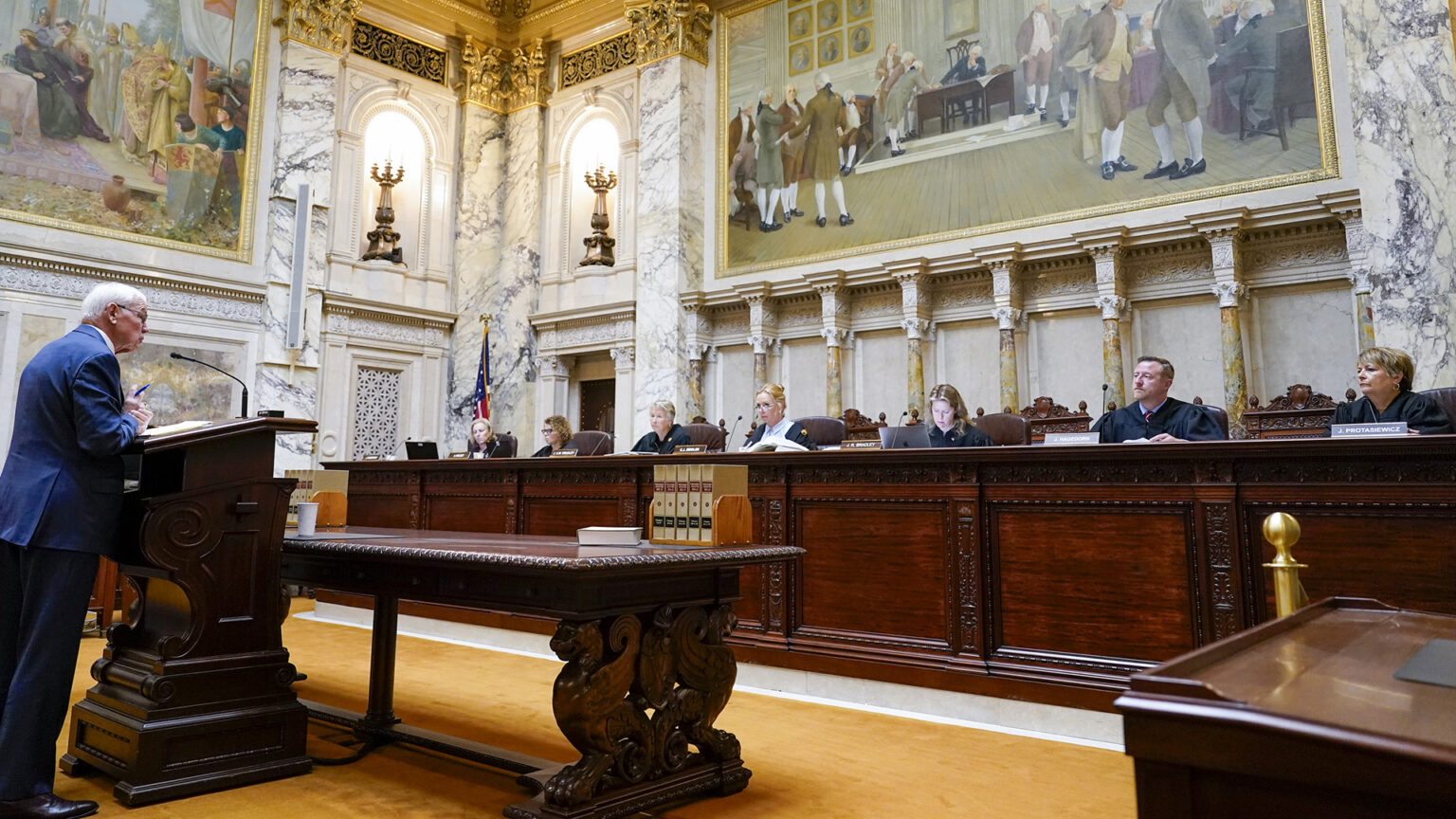
The Wisconsin Supreme Court's liberal majority is changing procedures in a way that could fast-track cases as several contentious lawsuits — mostly filed by Democrats or their allies — move through courts. The justices are shown during the opening hearing of their term on Sept. 7, 2023, at the Wisconsin State Capitol in Madison. (Credit: Andy Manis for Wisconsin Watch)

This article was first published by Wisconsin Watch.
The Wisconsin Supreme Court’s liberal majority in February 2024 quietly amended the high court’s internal operating procedures, according to documents obtained by Wisconsin Watch — changes that could speed up the disposition of several upcoming high-stakes political cases.
The changes limit the time dissenting justices have to respond to certain orders to two days; allow the court to shorten the window for parties to respond to certain petitions to less than the 14 days allowed in state law; and allow the court to agree to hear cases by a majority vote of members present at a meeting, rather than a majority of the entire court.
The changes were not publicly announced, but after Wisconsin Watch learned about them and asked the justices for comment, liberal Justice Rebecca Dallet said in a statement they “were made primarily to ensure that any one person could not hold up the work of the entire court.”
The move comes as a wave of politically contentious litigation — mostly filed by Democrats and their allies — works its way through the courts. Issues expected to come before the court include abortion access, collective bargaining rights for public sector unions and several election- and voting-related matters.
The changes also come as the court reshapes Wisconsin’s political paradigm. In December, the court threw out the state’s Republican gerrymandered voting districts, which led to Republican lawmakers approving new districts drawn by Democratic Gov. Tony Evers. The new boundaries scale back Republican legislative power and could even lead to Democratic majorities for the first time in more than a decade.
The operating procedure changes were adopted over the strong objections of the court’s conservative members. They were made with little discussion, the records suggest, and were approved via email. All four liberal justices — Justices Dallet, Ann Walsh Bradley, Jill Karofsky and Janet Protasiewicz — voted in favor, according to emails viewed by Wisconsin Watch.
They have already taken effect, according to an email sent by Walsh Bradley and reviewed by Wisconsin Watch. Walsh Bradley wants the changes to be discussed further during a meeting of the justices later in March, according to the email, and indicated her vote “on certain provisions may be modified pending further discussion.”
New procedures expedite case timeline
The Wisconsin Supreme Court’s operating procedures “are intended to structure the internal operations of the court” and effectively serve as a description of current court practices, according to an introduction of the procedures. They are not the same as “rules of appellate procedure” that typically get discussed in court conferences.
But the procedures can affect how quickly a case moves through the system.
Cases arrive at the state Supreme Court in a number of ways:
- A party who lost a case in the Court of Appeals can ask the court to review the decision.
- Any party involved in litigation decided by a district court may ask the high court to bypass the Court of Appeals and take a case.
- The Court of Appeals can ask the high court to take a case.
- The state Supreme Court, on its own motion, can decide to review a case appealed in the Court of Appeals directly.
- A party can petition the state Supreme Court to take a case directly, known as an original action.
One key change made in February allows the court to order a party’s response to a petition to bypass be submitted sooner than the 14 days outlined in state law.
Another change would create a tight timeline for the justices to attach written concurrences or dissents to orders. For example, if a majority of the court ordered a response to a petition to bypass, a dissenting justice would have just two business days to prepare their response. If another justice wanted to respond to that dissent, they would have just one day to file that reply.
A timeline for attaching a concurrence or dissent to such a preliminary order existed only for original actions in previous versions of the court’s operating procedures, according to a version of the document from August obtained by Wisconsin Watch. Under that version of the procedures, justices had five days to circulate a concurrence or dissent to an order for a response. Under the new rules, that timeline is shortened to two days.
The change to operating procedures would require any “concurrence or dissent to an order granting or denying a petition for bypass” be circulated among the justices within seven business days of the justices circulating a draft order. The same timeline would be in place if the court votes to take jurisdiction over an appeal pending in the Court of Appeals, which it can do without a petition for bypass or request by the appellate court.
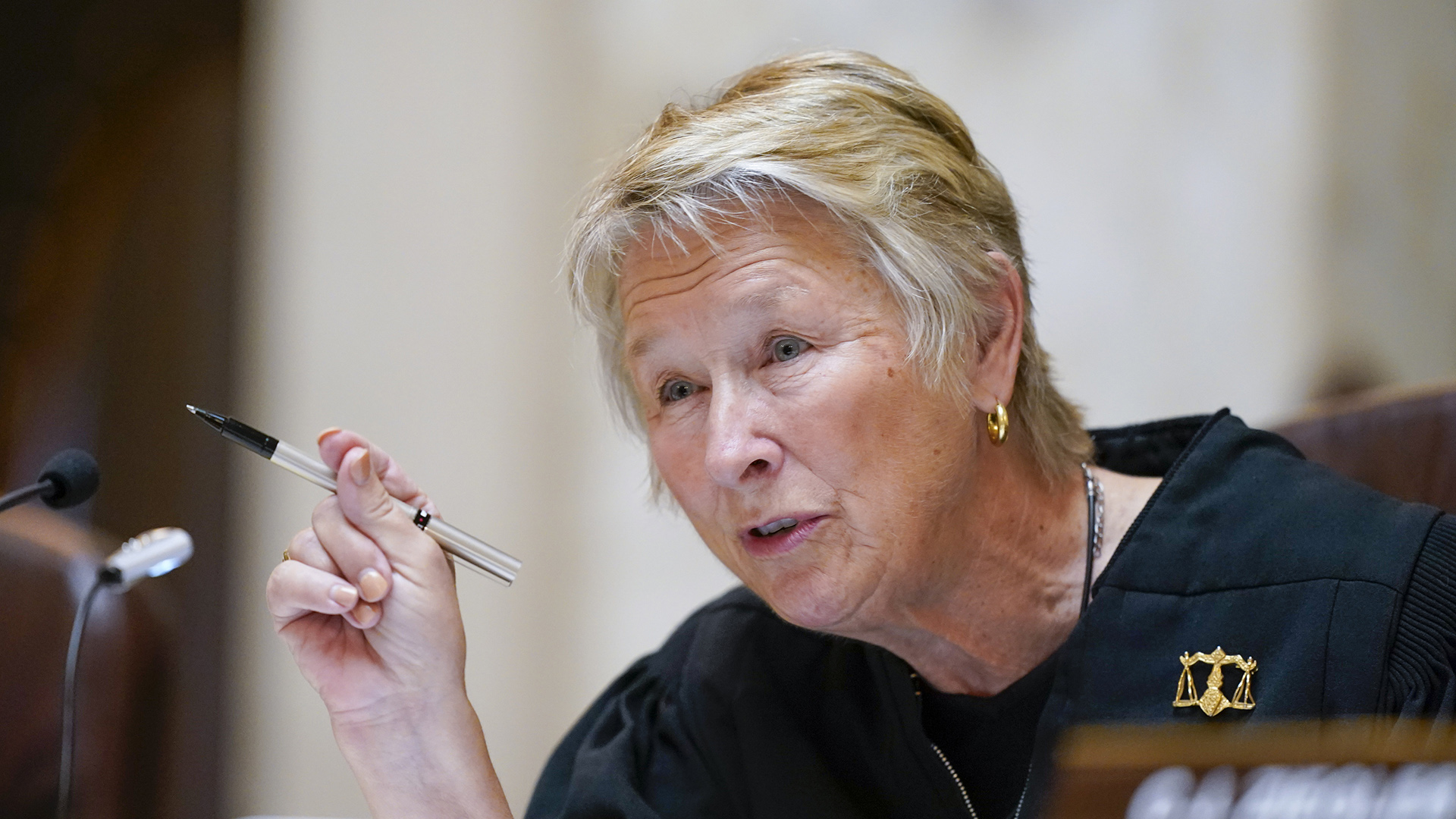
Quietly made changes to the Wisconsin Supreme Court’s operating procedures have taken effect but may be discussed at a court conference later this month, according to an email sent by liberal Justice Ann Walsh Bradley, who is shown on Sept. 7, 2023, at the Wisconsin State Capitol in Madison. (Credit: Andy Manis for Wisconsin Watch)
The changes would also likely accelerate the timeline of original actions — which are usually reserved for litigation that carries substantial weight and has a statewide effect.
If the court orders a response to a petition for original action, justices would also have just two business days to circulate a concurrence or dissent to the order. If a justice wants to respond further, they would have just one business day to circulate their reply. “Following the circulation of the last additional separate writing, the order for a response shall be issued as soon as practicable,” according to a copy of the changes obtained by Wisconsin Watch.
Responses that aren’t written within those time constraints would be noted in an order as “separate opinion to follow.”
Regardless of if a response is ordered in an original action, the changes would require the justices to consider a petition for original action at a court conference on a date determined by the court’s administrative committee, a body liberal justices created last year to oversee some tasks once left to the chief justice. Liberal justices maintain a 2-1 advantage on the committee, giving them the ability to override conservative Chief Justice Annette Ziegler.
The operating procedure changes would also allow the court to take on a case filed directly with it “upon the vote of a majority of the participating members of the court,” according to the documents obtained by Wisconsin Watch. That means the court could take on high-profile cases without the support of four members, as the previous version of the operating procedures required.
The liberal justices also added a section related to further amending the operating procedures.
“These internal operating procedures may be amended at any time by a majority vote of a quorum of the court,” the addition reads. “Any such amendment is effective immediately unless there is an affirmative vote of a majority of the court otherwise.”
The Wisconsin Constitution states that four justices constitute a quorum. The change means just three justices could change the court’s operating procedures if only four members were present.
It’s the third set of changes to the court’s internal procedures adopted since the liberals took control of the court in August. That ties for the most changes in a single term since they were created in 1984 and amended 22 times since.
Dallet said the latest change was being decided over email because the justices had “no upcoming conference dates scheduled,” according to an email obtained by Wisconsin Watch.
“Since we have been in the majority, there have been members of the court who seem to want to limit the court’s ability to do its work,” Dallet said in a statement to Wisconsin Watch. “Although we don’t lightly make changes to our internal operating procedures (IOPs), changes were necessary to make sure we can timely address all cases brought before us.”
“The vote on the proposed changes was taken by email, as that has become standard practice of the court, especially this term when we have far fewer days on our calendar to discuss court business in conference,” Dallet added. “In fact, the chief justice just removed two more conference days. Our multiple requests for additional conference dates have been refused.”
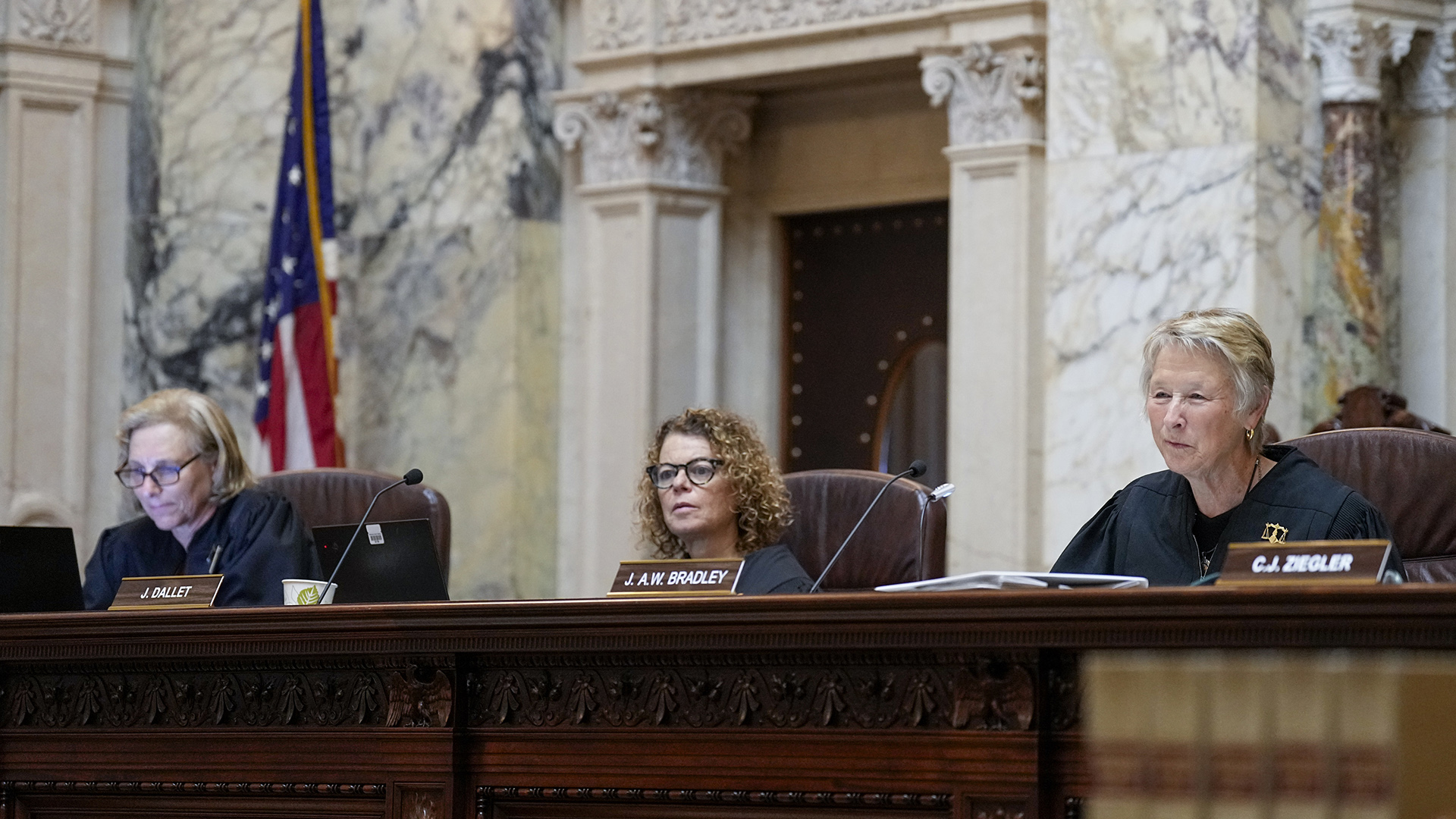
From left, Wisconsin Supreme Court justices Jill Karofsky, Rebecca Dallet and Ann Walsh Bradley — three of the court’s four liberal members — are shown on Sept. 7, 2023, at the Wisconsin State Capitol in Madison. (Credit: Andy Manis for Wisconsin Watch)
The liberal justices have asked for the changes to the operating procedures be discussed at the court’s next conference, Dallet said, adding that she hopes “that some of our colleagues will actually engage in discussion about them at that time.”
“Frankly, they have refused to do so thus far,” Dallet said. “Unfortunately, it seems some would prefer to use delay to achieve their desired outcomes rather than allow the court to collegially do its work.”
Conservatives criticize move
The changes, approved Feb. 22, drew criticism from the court’s conservative justices. In August, Wisconsin Watch reported previously unknown details about the process the court’s liberal justices used to make changes to the court’s operating procedures to give themselves power over key court functions, such as scheduling oral arguments.
“Once again, by sheer will, the new court of four, in secret and behind closed doors, bulldozes over the institutional integrity of the court, all to advance their political agenda while simultaneously silencing any opposing opinion,” Ziegler said in a statement.
Ziegler said she removed the two conference days from the court calendar because there were no oral arguments or rules hearings that could be scheduled on those days.
Justice Rebecca Bradley, another conservative, said the liberal justices were acting as a “political cabal.”
They “met in secret, without their colleagues, and rewrote rules and statutes to silence their colleagues, expedite political cases, and serve the interests of their donors and political allies,” she said in a statement. “This rogue majority continues to trample the constitution, giving itself dictatorial powers to reshape the political balance in Wisconsin.”
Justice Brian Hagedorn, one of the court’s conservative members who occasionally votes with the liberals, wrote in an email to his colleagues on Feb. 22, “this is, once again, an unfortunate way to go about things.”
“Changing the way the court operates and handles its docket should be something we discuss together as a full court,” he wrote. “The only reason to make a change now, with no alert, and to do so via email, would seem to be because four justices wish to expedite some of the politically-charged cases we are now receiving.”
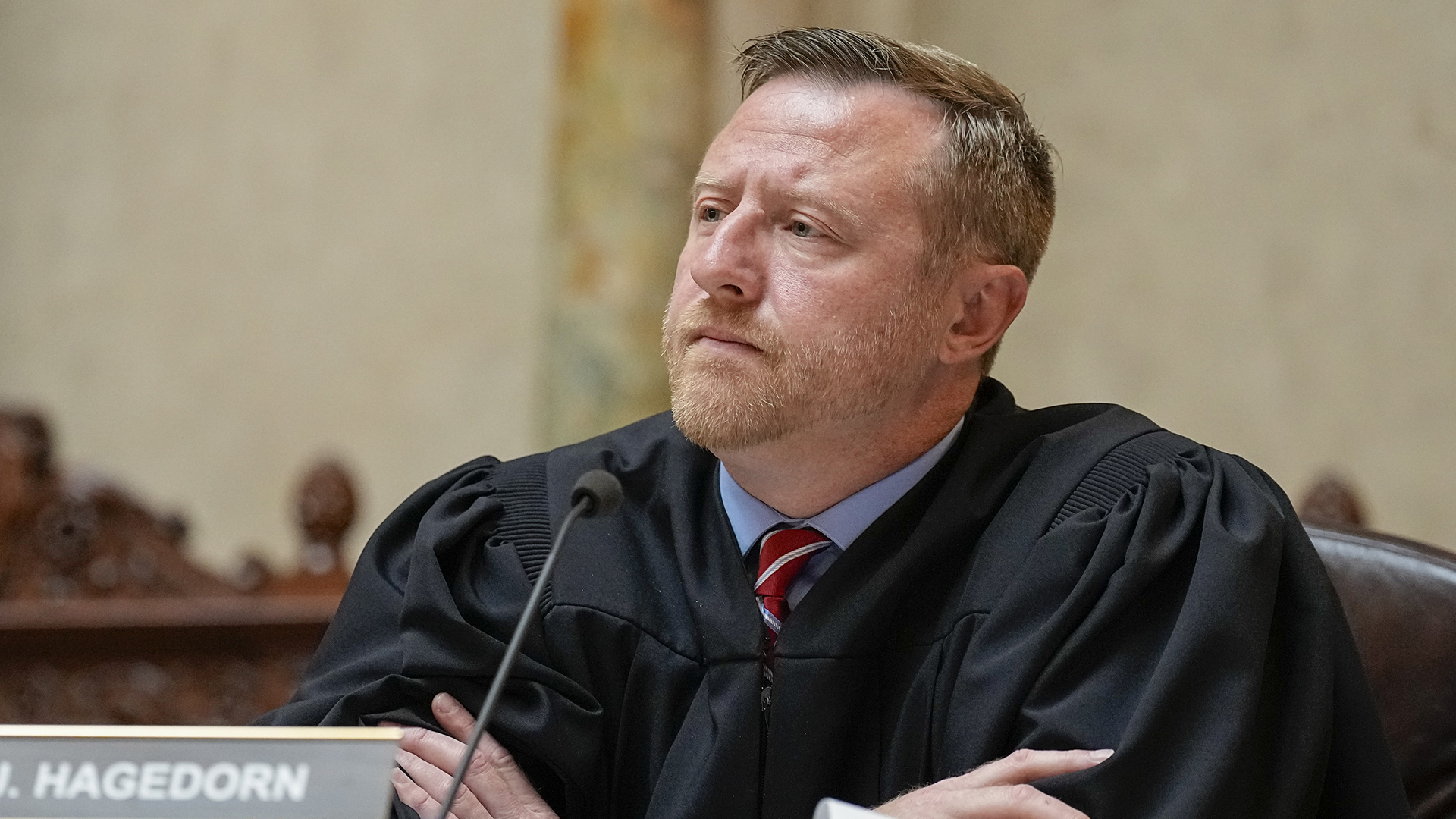
“The only reason to make a change now, with no alert, and to do so via email, would seem to be because four justices wish to expedite some of the politically-charged cases we are now receiving,” Wisconsin Supreme Court Justice Brian Hagedorn, a conservative who occasionally votes with liberals, wrote to colleagues about changes to court operating procedures. He is shown on Sept. 7, 2023, at the Wisconsin State Capitol in Madison. (Credit: Andy Manis for Wisconsin Watch)
Hagedorn, who declined to comment for this story, also worried the procedural changes — and the process to make them — would further erode trust among the justices.
“It’s not worth it, and it’s causing more long-term damage to the institution,” he wrote. “At some point, the ends cannot keep justifying means and methods that would — if the shoe were on the other foot — be seen as discourteous and unprofessional.”
The nonprofit Wisconsin Watch collaborates with WPR, PBS Wisconsin, other news media and the University of Wisconsin-Madison School of Journalism and Mass Communication. All works created, published, posted or disseminated by Wisconsin Watch do not necessarily reflect the views or opinions of UW-Madison or any of its affiliates.
 Passport
Passport






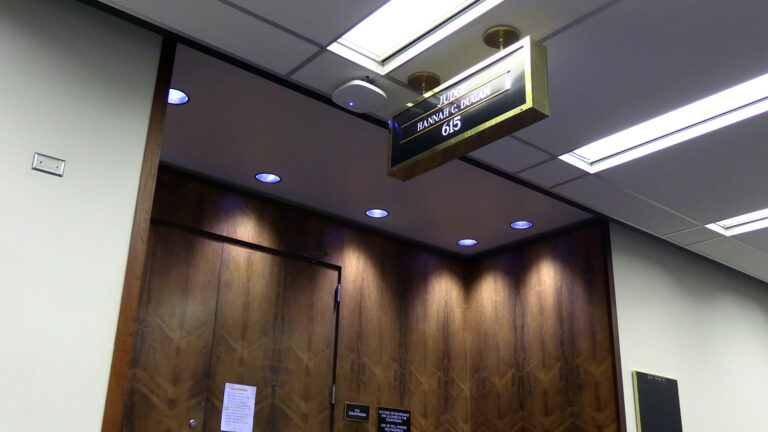


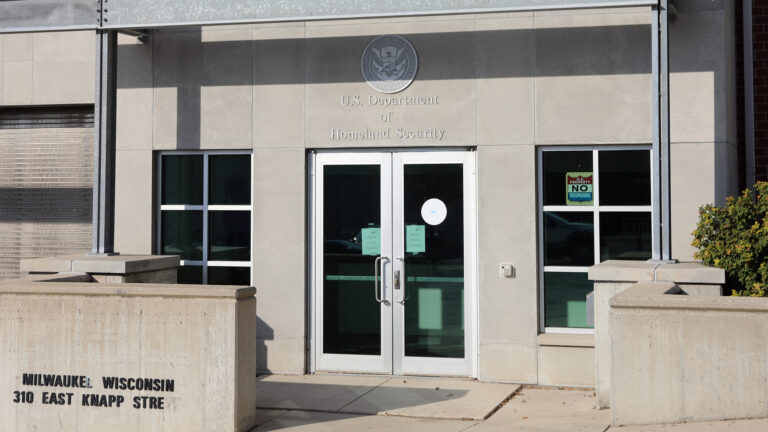

Follow Us